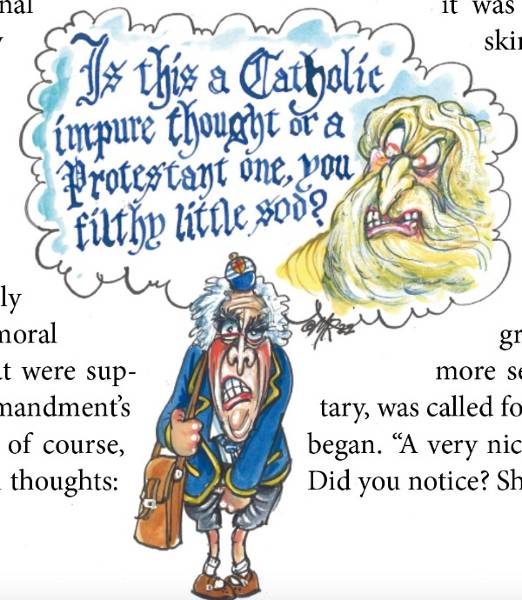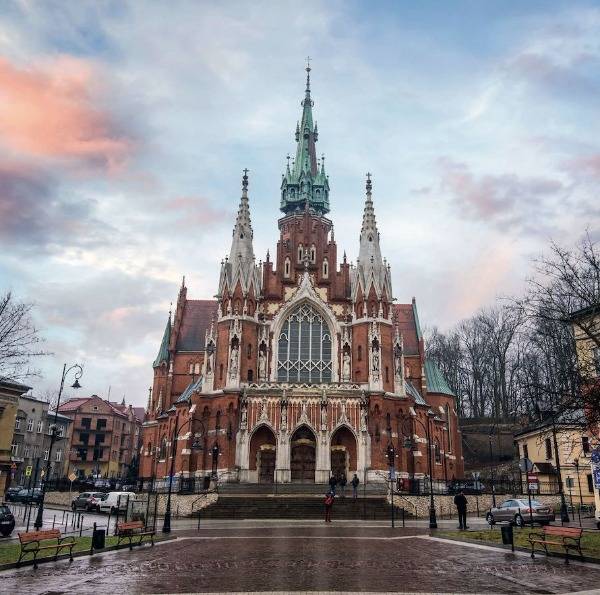His name is theatrical, he has a huge crucifix and he has said that Harry Potter is an incarnation of the Antichrist. Welcome to the world of Gabriele Amorth, the Vatican's top exorcist and to millions of Catholics a big gun in the battle with the dark side: he is the author of An Exorcist Tells His Story (translated into 14 languages), the subject of numerous national television interviews and a powerful voice in a world where sin is in and 'miracles' get television coverage.
"I am very busy," he tells me on the phone. "I have six exorcisms to do this afternoon. I am afraid to report that occultism, Satanism and black magic are becoming very popular here," he says, and adds enigmatically, "the forces are on the march."
I almost laugh, but Amorth has a point. These days, Italians are indeed refreshing their historic affair with mysticism. There is Padre Pio, a notlonggone Catholic guru whose lurid claims to sainthood now harness a sevenmillion strong pilgrimage to his tomb every year (the shrine even has a dedicated TV programme). And last year, Italians spent over 450m euros on fortune tellers, faithhealers, holy men and jossstick burners of every flavour.
Oh, and then there are the exorcists. Currently waving crosses and sprinkling holy water in every diocese of the country (exorcists get their licences to practice from bishops), their number has grown from 20 to over 300 in just ten years.
It is tempting to assign Amorth to the same kitsch landscape as Padre Pio and the numerous mystics that populate the peninsula. He most recently labelled young girls' dolls as 'Satanic' and is well known for carrying out telephone exorcisms on distressed housewives (most of his clients are women).
Still, there is considerably more to Amorth than meets the sceptical eye. His background is impressive: a former partisan commander trained in law, brother of a judge, and son of lawyers, he is also a professional journalist (he has been a regular contributor to the weekly magazine Famiglia Cristiana and is an associate editor of the monthly Madre di Dio). And now, at 80 years old, he is easily the most respected exorcist in Italy. A priest for 50 years and an exorcist for 15, he is the president of the International Association of Exorcists, which he cofounded.
Neither is Amorth necessarily the doomsaying antiprogressive that one would expect. For one thing, Amorth doesn't see his activities as a replacement for clinical medicine. Indeed, he says: "I only receive people who have already been to a doctor first and come to me when all else fails." His answerphone message advises just that, although, he says: "my telephone filter doesn't always work and most people I see are not possessed. Many are suffering from a mental illness. In that case I call the hospital and try to fix them an appointment."
So how can he tell if someone is possessed? "If the person reacts violently to the sacraments or blessings then it is a case of possession." What does he do then? "If there are demons I need to know in what number they're in possession of the patient. Sometimes they enter through a human curse or spell, and I need to find out the details. If it is the Devil himself, which is rare, the first step is to call him by his name, which is Lucifer, Beelzebub or Satan."
I ask him to describe how he gets rid of the possessor. "It can take minutes, hours, weeks or years and the demon can emerge in slow waves or in sharp spasms. I carry out a ritual which involves very old prayers, from 1614. I often need the help of other priests to recite the prayers and to help restrain the patient. I touch the neck of the possessed with the hem of the stole. I then touch the forehead. Oil and holy water can help aggravate the demon and get him to reveal himself. If I am dealing with Satan I pronounce the words Vade retro Satan (Go back Satan)."
Has he conversed with the Devil recently? "I did this morning. A girl came to me who couldn't sleep or lead a normal life. She had pains in her heart early every morning, which would vanish by lunchtime. When we started to exorcise, she went into a trance, and afterwards started to convulse. It took several of us, me and three assistants, to hold her down. She had huge strength. We have to be careful not to let the patients harm themselves. In this case I managed to begin interrogating the possessor, who is the Devil. It will be a long process."
Amorth presents his ostensibly absurd stories convincingly, with charm and plenty of natural levity. Indeed, there is something of a sophist about Amorth. Ask him to quantify the rise in occultism, and he replies, "it is difficult to give credible statistics." (Credible statistics do exist: see the Eurispes research institute.) Or ask which kind of person he treats most often. "The category most affected by Satanism is doctors; they are courageous with others' bodies but fearful with their own."
Such neat rhetoric is not surprising given that Amorth cut his teeth in the public sphere working for the youth Christian Democrats (in the late 1940s). A more curious fact is that back then he was deputy to a young Giulio Andreotti, whose seven terms as Prime Minister were to represent a climax of corruption in Italian politics. "We worked together and learnt a great deal together," Amorth tells me, but won't be pressed any further on the subject.
Whatever exactly he learnt back then, Amorth clearly knows how to gather devotees to his work: he carried out "about 800 exorcisms last year", and is listed on innumerable Catholic websites which recommend his services. In fact, the muchtouted question of whether our Father is a charlatan or not (apart from being a fruitless one) pales into insignificance beside the larger question of the nature of his public role in Italy and here things get stickier.
In 2000 a horrific murder by a couple from Novi Liguria, Erika and Omar, gained extra notoriety in the Italian press after it emerged that the pair had a history of dabbling in black magic and séances. Amorth was interviewed shortly afterwards in L'Espresso. "As soon as I heard about the murder I knew that it bore the mark of the Devil. Erika had given herself to Satan. In cases like this, science can tell us nothing," he said.
The statement caused uproar in the Italian media. "That we give platforms to voices like those of Father Amorth demonstrates the difficult time that facts have in this country. We don't look for the source of the problem in 'normal' family relations [Erika's mother and brother were the victims]. No, the answer is right before our eyes, we're told, it's the demon," wrote Gianni Marsilli, in Unità.
The Devil has not been the only offensive weapon used by Amorth against society's deviants and dissenters. Following the announcement in 2001 that the exCuria Archbishop Emmanuel Milingo would marry a Korean woman and that the ceremony was to be presided over by a Unification Church reverend, Amorth did invoke science as the cure for mixing Catholicism with another faith: "Milingo's friends have asked me to carry out a distanceexorcism on him, but I refused. This is not a case of possession. Milingo is as naive as a baby. He has been brainwashed and will have to be cured with the help of psychiatrists." So much for religious tolerance.
Even the Vatican has sought to distance itself from the kind of hardline Catholicism that is promulgated by Amorth. The famously progressive policies set out by the Second Vatican Council in 1963 sought to play down the Devil and instead concentrate on the Christian ideals of love, goodness and compassion. And in a 1999 revision of the rite of exorcism, the Vatican recommended that priests "do not exorcise unless there is already very strong evidence of possession", something that makes Amorth's blood boil. "This is a masterpiece of incompetence," he says. "You only know if a demon is present through exorcism."
Strong words, but in terms of Vatican politics Amorth has a virtual carte blanche for his diatribes. He knows that the Pope himself can't resist the odd exorcism: in 2000 John Paul read demonexpunging prayers to a girl who began to shout hysterically during a mass in St Peter's square. The Vatican press office denied that he had performed an exorcism, but later John Paul was reported as saying "he who does not believe in the Devil does not believe in the Gospel." Factor in the Italian laity's current attachment to the US Catholic charismatic movement which lists exorcism as an important rite to a creed through which "the holy spirit is to be experienced directly" and it becomes clear that Amorth represents a powerful strand of Catholic thinking.
The expansion of a fundamentalist edge of Catholicism into the Italian public domain should concern us more than the stories of individual exorcisms (there are psychiatrists who believe that exorcism can be used fruitfully in tandem with their own techniques). The kind of evangelical truth expounded by Amorth is a tempting titbit for a society with little public trust and a dramatic imagination. The losers? Religious tolerance and ordinary human responsibility.

